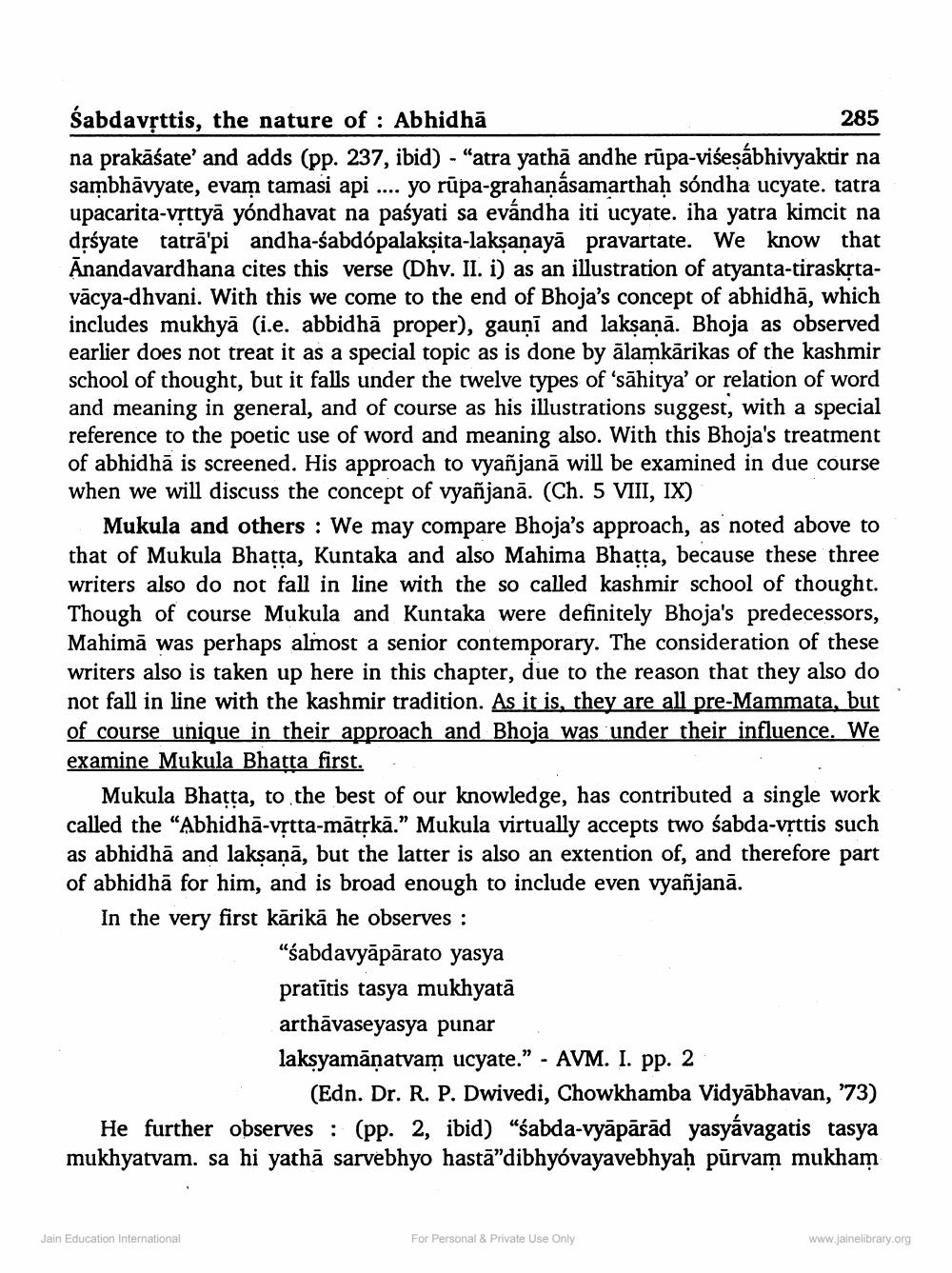________________
Śabdavșttis, the nature of : Abhidhā
285 na prakāśate' and adds (pp. 237, ibid) - "atra yathā andhe rūpa-viśeşábhivyaktir na sambhāvyate, evam tamasi api .... yo rūpa-grahaņásamarthaḥ sóndha ucyate. tatra upacarita-vịttyā yondhavat na paśyati sa evándha iti ucyate. iha yatra kimcit na drśyate tatrā'pi andha-śabdopalaksita-laksanayā pravartate. We know that Anandavardhana cites this verse (Dhv. II. i) as an illustration of atyanta-tirasktavācya-dhvani. With this we come to the end of Bhoja's concept of abhidha, which includes mukhyā (i.e. abbidhā proper), gaunī and laksanā. Bhoja as observed earlier does not treat it as a special topic as is done by alamkārikas of the kashmir school of thought, but it falls under the twelve types of 'sāhitya' or relation of word and meaning in general, and of course as his illustrations suggest, with a special reference to the poetic use of word and meaning also. With this Bhoja's treatment of abhidhā is screened. His approach to vyañjanā will be examined in due course when we will discuss the concept of vyañjanā. (Ch. 5 VIII, IX)
Mukula and others : We may compare Bhoja's approach, as noted above to that of Mukula Bhatta, Kuntaka and also Mahima Bhatta, because these three writers also do not fall in line with the so called kashmir school of thought. Though of course Mukula and Kuntaka were definitely Bhoja's predecessors, Mahimā was perhaps almost a senior contemporary. The consideration of these writers also is taken up here in this chapter, due to the reason that they also do not fall in line with the kashmir tradition. As it is, they are all pre-Mammata, but of course unique in their approach and Bhoja was under their influence. We examine Mukula Bhatta first.
Mukula Bhatta, to the best of our knowledge, has contributed a single work called the "Abhidhā-vstta-mātřkā.” Mukula virtually accepts two śabda-vrttis such as abhidhā and laksaņā, but the latter is also an extention of, and therefore part of abhidhā for him, and is broad enough to include even vyañjanā. In the very first kārikā he observes :
“sabdavyāpārato yasya pratītis tasya mukhyatā arthāvaseyasya punar laksyamāṇatvam ucyate.” - AVM. I. pp. 2
(Edn. Dr. R. P. Dwivedi, Chowkhamba Vidyābhavan, '73) He further observes : (pp. 2, ibid) “sabda-vyāpārād yasyávagatis tasya mukhyatvam. sa hi yathā sarvebhyo hastā”dibhyóvayavebhyaḥ pūrvam mukham
Jain Education International
For Personal & Private Use Only
www.jainelibrary.org




